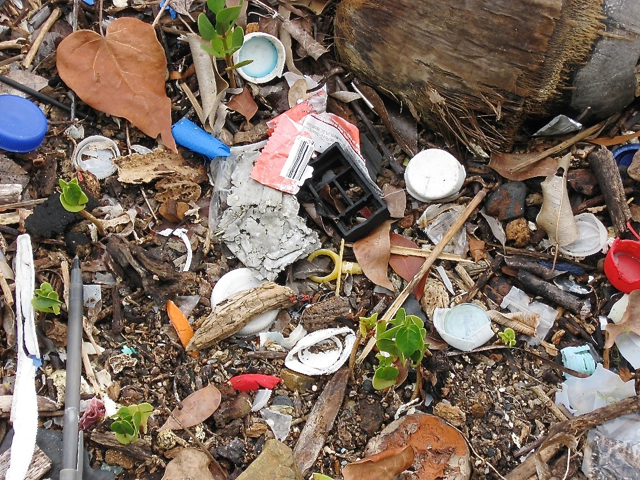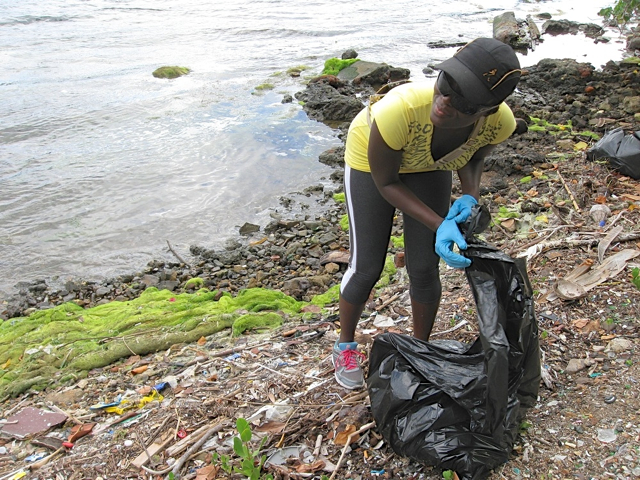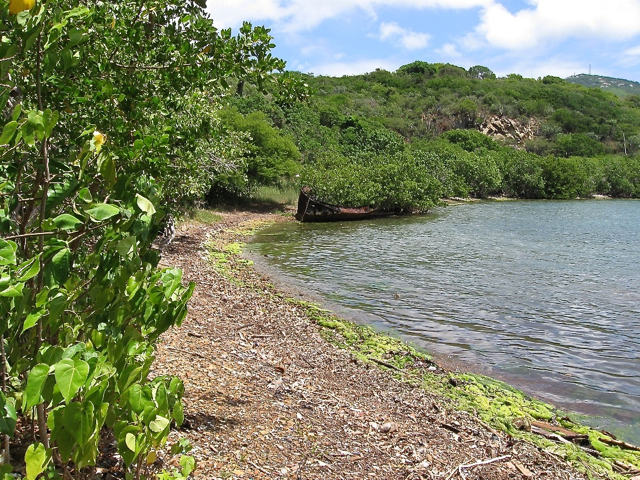
The event lasted from 7 a.m. to noon, with 32 volunteers answering the call.
Vince “Doc” Palancia, the lead Hassel Island guide, was the St. Thomas Historical Trust member that organized the event. He began plans for the cleanup in late April to deal with the piles of trash lining Hassel Island’s beaches.
It’s been a year since the last cleanup and the beaches were starting to look really bad, but no one could have guessed just how much garbage the volunteers encountered. The group was more than surprised when six truckloads of trash were collected and taken away.
“I counted 98 trash bags,” Palancia said.
Several different groups came to take part in the cleanup. The Environmental Rangers, Rotary Club of St. Thomas, Environmental Association of St. Thomas-St. John (EAST,) and V.I. Ecotours attended, along with a few unaffiliated concerned citizens.

Garbage bags filled up quickly. Careening Cove was one of the worst scenes. Jason Budson, a volunteer and member of EAST, said he has never seen anything like it.
“We’ve done beach cleanups all over, but Careening Cove by far takes the cake,” he said.
A barge sits at the shore’s edge at Careening Cove, filled with old bottles, cans and foam-plastic food containers. The sign commemorating the historic barge is surrounding by trash.
There are many theories as to where the trash is coming from.
A lot is likely blowing over here from Bovoni dump, Budson said.
“I think a lot of it comes from when the gutters flush and the garbage flows right into the harbor,” Palencia said.
Because of its location and the flow of currents, the island acts as a catcher’s mitt for all the garbage thrown or washed into the ocean.
.jpg)
However, not a lot of people are familiar with just how historic the island is. Before colonization, Hassel Island had a vibrant population of Carib, Taino and Arawak Indians. But by the middle of the 16th century, those groups had disappeared, an unfortunate result of colonial forces.
Once colonized by the Danish, Hassel Island developed into a coaling station and a port for damaged ships. Vessels came in and were tipped on their sides. The process was known as careening, which gave the Careening Cove its name.
The island was also the site of a famous women’s strike led by Queen Coziah, a coal-carrier.
“It was the first successful female strike in the western hemisphere,” Palancia said.
It even had an active leprosarium for almost 30 years.
The island was a peninsula of St. Thomas until 1864. The harbor had been polluted by increases in ship traffic, leading to outbreaks of cholera and malaria. The Danish were forced to dredge the harbor, hoping that increasing the circulation would cleanse the pollutants.
Palancia has seen firsthand just how much the island’s cultural significance is undervalued.
“One of my greatest joys doing what I do on Hassel Island is bringing high school students over,” he said. “When I talk about Queen Coziah and the coaling ladies, when I talk about the black slave soldiers, when I talk about John Perkins, the first black man to get a commission in the royal navy, invariably I have one or two of them at the end of the hike say, ‘we never learned that in Caribbean History class.’”

Budson said better recycling programs for plastics could alleviate some of the problem.
“Plastics are the issue,” he said. “They take an enormous amount of time to break down and even then they never go away. We have to be more responsible for taking care of our trash.”
“People need to be more environmentally aware,” Palancia said. “You can’t just sit in your house and watch your Netflix and think that somewhere along the line the trash that’s building up outside, isn’t going to affect you,” he said.





